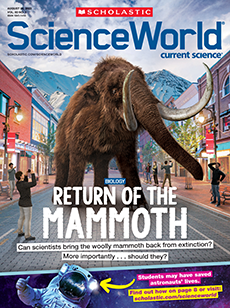JIM MCMAHON/MAPMAN ®
This huge sphere looks like something out of Star Wars. But it’s a real-life device, part of the new Jiangmen Underground Neutrino Observatory (JUNO) in Kaiping, China. It was built to study neutrinos—particles with no charge and almost no mass.
“Neutrinos are one of the most abundant particles in the universe,” explains J. Pedro Ochoa-Ricoux, a physicist involved in JUNO. These particles are constantly streaming all around us. But they rarely interact with matter, so they pass through objects without a trace.
Very rarely, neutrinos bump into other particles. Large detectors are more likely to capture these interactions—and JUNO is the largest detector of its kind ever built! With JUNO’s help, scientists hope to better understand neutrinos and their role in the universe
